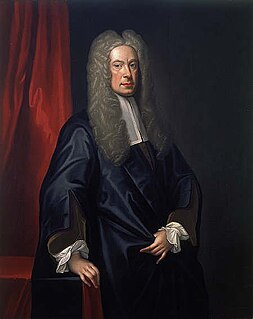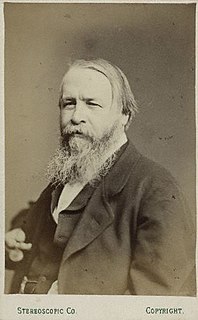
Madeleine Hamilton Smith was a 19th-century Glasgow socialite who was the accused in a sensational murder trial in Scotland in 1857.

Rt Hon John Inglis, Lord Glencorse FRSE DCL LLD was a Scottish politician and judge. He was Lord President of the Court of Session (1867–1891).

Sir John Clerk of Penicuik, 2nd Baronet (1676–1755) was a Scottish politician, lawyer, judge and composer.

Douglas Beresford Malise Ronald Graham, 5th Duke of Montrose KT was a Scottish nobleman.

Arthur Beresford Pite was a British architect known for creating Edwardian buildings in Baroque Revival, Byzantine Revival and Greek Revival styles.
Sir John James Burnet was a Scottish Edwardian architect who was noted for a number of prominent buildings in Glasgow and London. He was the son of the architect John Burnet, and later went into partnership with his father, joining an architectural firm which would become an influential force in British Modern architecture in the 20th century.
David MacGibbon and Thomas Ross were Scottish architects. Their practice, MacGibbon and Ross was established in 1872 and continued until 1914. They are best known today for their comprehensive published surveys of Scotland's architectural heritage.
Alexander Inglis was a Scottish cleric and royal clerk. He was the son of one George Inglis and his wife Margeret. At some point in his life he had attended university and obtained a Licentiate in Decrees. In 1477 he became Dean of the diocese of Dunkeld, and in 1480 became Archdeacon of St Andrews. On 17 September 1483, after the death of Bishop James Livingston, he was elected to succeed the latter as Bishop of Dunkeld. Inglis ran into difficulty on 22 October, when the Chancellor of the diocese of Aberdeen, George Brown, was also provided as Bishop of Dunkeld. Inglis was styled Bishop-elect in Scotland until 1485, but on 13 June 1484, Brown had been consecrated at the Papal see. Inglis continued to hold his previous posts as Archdeacon and Dean until his death in 1496.

John Thomas Rochead was a Scottish architect. He is most noteworthy on a national scale for having been the designer of the Wallace Monument.

Sir Alexander James Beresford Beresford Hope PC, known as Alexander Hope until 1854, was a British author and Conservative politician.
Murdostoun is an estate in North Lanarkshire, Scotland, which includes a castle, which lies on the South Calder Water near the village of Bonkle in the parish of Shotts, North Lanarkshire, Scotland. The name Murdostoun was derived from the words Murthock and Toun which meant dwelling of Murthock. Murdostoun can refer to the ancient barony of the Scott and then the Inglis clan, the castle built by the Scotts or a bridge over the South Calder Water.

The Beresford is a former hotel situated at 460 Sauchiehall Street, Glasgow, Scotland. It opened in 1938 to provide accommodation for those attending the city's Empire Exhibition and was often described as Glasgow's first skyscraper, being the tallest building erected in Glasgow between the two world wars, at seven storeys high. It is one of the city's most notable examples of Art Deco/Streamline Moderne architecture, and is protected as a category B listed building.

James Paterson PRSW RSA RWS, was a Scottish landscape and portrait painter associated with The Glasgow Boys movement of artists. He is best known for his landscape paintings of Dumfriesshire, where he lived, at Moniaive from 1885 to 1905.

John Inglis LLD was a Scottish engineer and shipbuilder who managed the well-known shipyard A. & J. Inglis in Pointhouse Glasgow, which had been set up by his father Anthony Inglis and his uncle John Inglis.
Charles Ransford, M.D., was a traditionally educated British physician and a Fellow of the Royal College of Physicians of Edinburgh, who later became the private physician of the Duke of Northumberland and an early advocate of homoeopathic medicine.
William Inglis may refer to:
Hugh Watt was a Scottish minister and historian. He served as Moderator of the General Assembly of the Church of Scotland in 1950. He was president of the Scottish Church History Society 1938 to 1941.

James Inglis (1813-1851) was a Scottish physician, author and geologist.
Harold Ogle Tarbolton FRIBA (1869–1947) was a 19th/20th century British architect, mainly working in Scotland. He was affectionately known as Tarrybreeks. In later life he went into partnership with Sir Matthew Ochterlony to create Tarbolton & Ochterlony.
Mary Alice Faid, was a British writer of children's books, mostly religious fiction, and of adult fiction.











